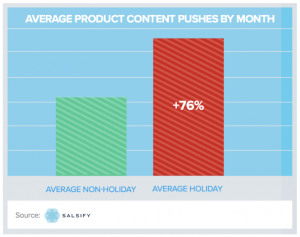By Elliot Simmonds, Published October 25, 2014
We’ve been talking a lot of the Rippleout Blog recently about consumer psychology, and how important other people, and trying to understand them, is to a small business. However, whilst this is always really interesting, it’s also somewhat blue sky. So, for this week, we’re going to bring it a little bit closer to home and discuss internal linking within websites.
Internal linking is one part of SEO over which you as a business owner (or just a website owner more generally) have total and complete control, and it is also important within websites for a number of other reasons, some of which we’ll cover below.
What is Internal Linking?
Internal linking is the process of creating links on your website to other pages on your website – i.e. much like the link to the Rippleout Blog posts at the top of this article. Internal links are separate from external links in that they do not send a visitor to third party websites – they are more a way of making it easy for visitors to navigate your website, and to find more content that they might find interesting. For instance, if you’re reading this post on internal linking, you might also find our article about website page titles interesting – it’s also about user experience and search engine optimisation.
Why is Internal Linking Important?
As mentioned above, internal linking is a good way to improve your visitors’ experience whilst on your site. If you can provide them with relevant content which is linked to what they are currently viewing, then that in itself is easier than them having to, for instance, search for that content in a navigation bar.
In addition, this also means that your visitors may well stay on your site longer – reading other articles, or other content (which could be product descriptions or service propositions for instance). This has two positive aspects. First, your visitors see more about what you do, read more about what you know, and potentially see more of your products or services. Second, Google and other search engines are now taking in to account the time that visitors spend on a site, and the bounce rate (how many people leave your site without viewing a second page) as measures of the quality of a website – and thus it impacts SEO.
Another positive element of internal linking is that if your content is syndicated (i.e. your content is placed on other websites after it is published on your own) then having internal links within blog posts and other syndicated content will provide you with some backlinks to your site, as well as potentially with traffic to other pages which were not syndicated.
On a side note, if your content is being syndicated (try searching for the title of one of your posts and Google and see if it appears elsewhere apart from your domain) some of these sites are poor quality, and thus the links they provide back to you may not benefit you. If you’re not sure whether your content is syndicated, it’s worth checking it out!
We welcome comments from all our readers – so please feel free to express your views in the space below.
Social Articles | Business 2 Community
(334)
Report Post





